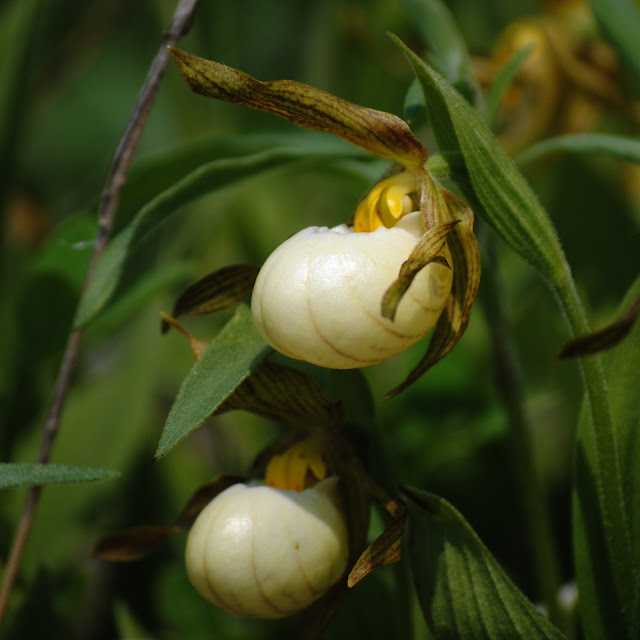As a child, I always dreamed of being a pioneer. I naively questioned whether there is anything left to discover in this beautiful country. In North Dakota, one of the very first plants I found while walking the nostalgic open prairies was the Nuttall's violet (Viola nuttalli). A lance leaved violet, Nuttall's violet was discovered and named after a famous botanist and pioneer, Thomas Nuttall, who traveled throughout many of the same places I have been, such as the midwest and great plains states. For some reason, he inspired me to scrutinize new and odd plants much more closely.
Weeks later, I volunteered to do an annual lady's slipper orchid survey throughout some of Arrowwood National Wildlife Refuge's most rich and untouched lands. One site yielded thousands of lady's slippers including three species - Cypripedium candidum, Cypripedium parviflorum var. makasin, and a brand new species to that county - Cypripedium x andrewsii, which I found. Refer to my previous post on this topic here. Nuttall traveled many of the same areas that Lewis and Clark had; though, they lost many of their specimens. Like Nuttall, it feels exciting to find species that my predecessors overlooked and to be a pioneer in a sense.
On August 31st, my good friend Andrew Gibson The Natural Treasures of Ohio and I set out to do some botanizing around his neck of the woods - Clark and Madison counties, Ohio. He has been excited to show me some of Ohio's fens and remnant prairies for a while now and I was more than excited for the opportunity to tag along - so excited that I only got three hours of sleep the night before! Some areas that we tackled include Prairie Road fen, Gallagher Fen, Pearl King Oak Savannah, and Davey Old-Growth Woods. I knew I'd be hiking around in two counties with well-preserved natural areas but what I didn't know was that I'd be leaving having been a part of history in both counties. Every trip has a goal and our goal was to get me one common Spiranthes spp. under my belt. In addition, I left having been a part of the discovery of two new county records - Spiranthes ovalis in Clark county and Spiranthes lacera var. gracilis in Madison county. On top of that, I was the very first to snap pictures of these beauties. Such an amazing experience that I will never forget!
Though I never set out to find a rare plant or discovery, it is exhilarating to be part of such unique experiences. They have opened my eyes to botany and have certainly inspired me to take a closer look at the forest floor, prairies, and fens I hike through.




















































